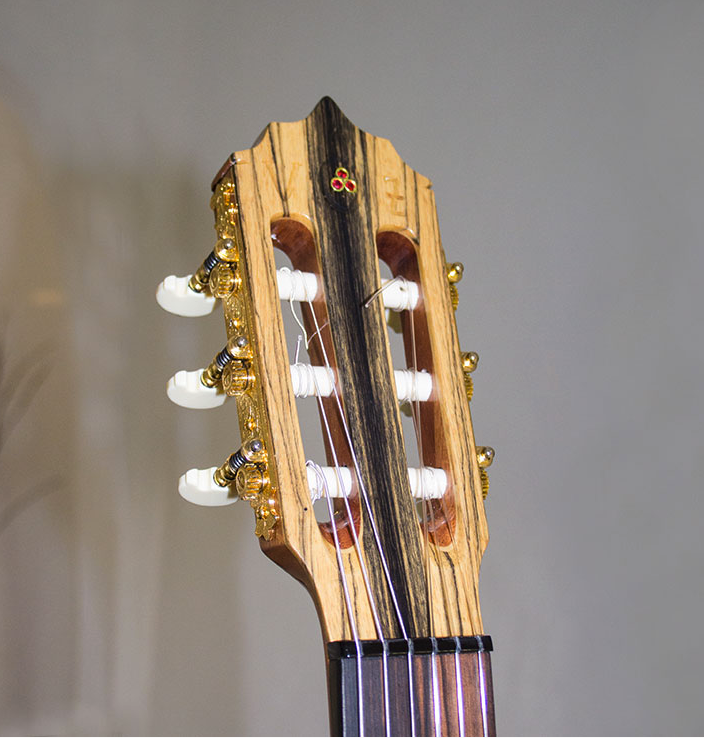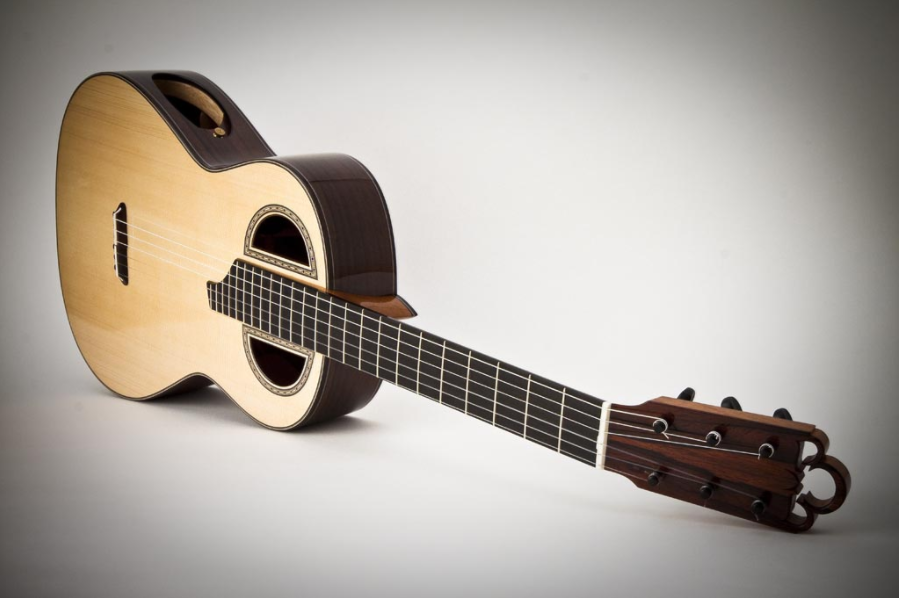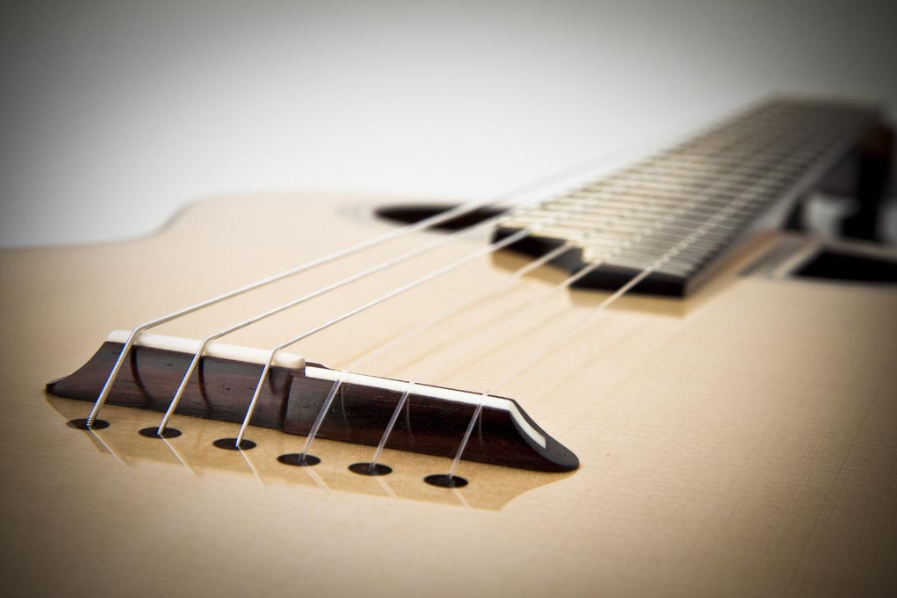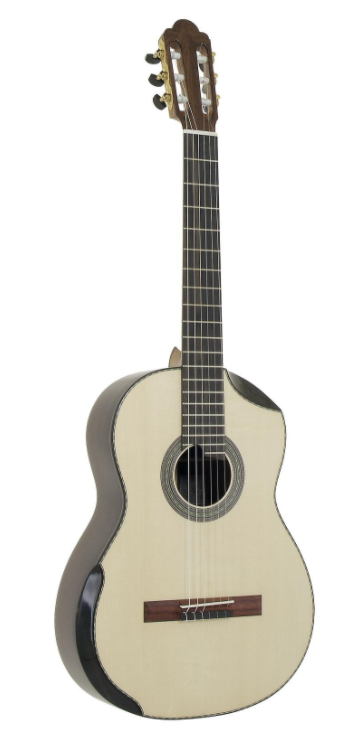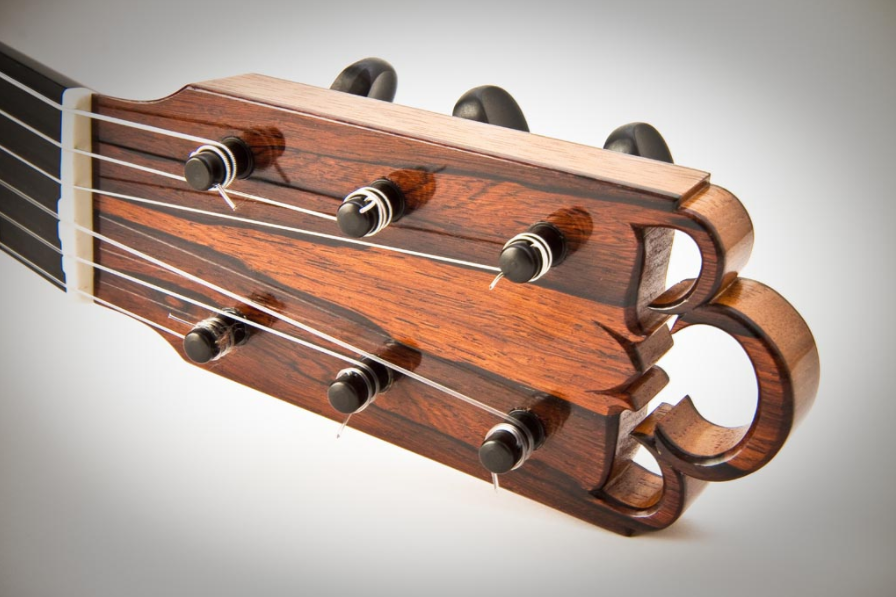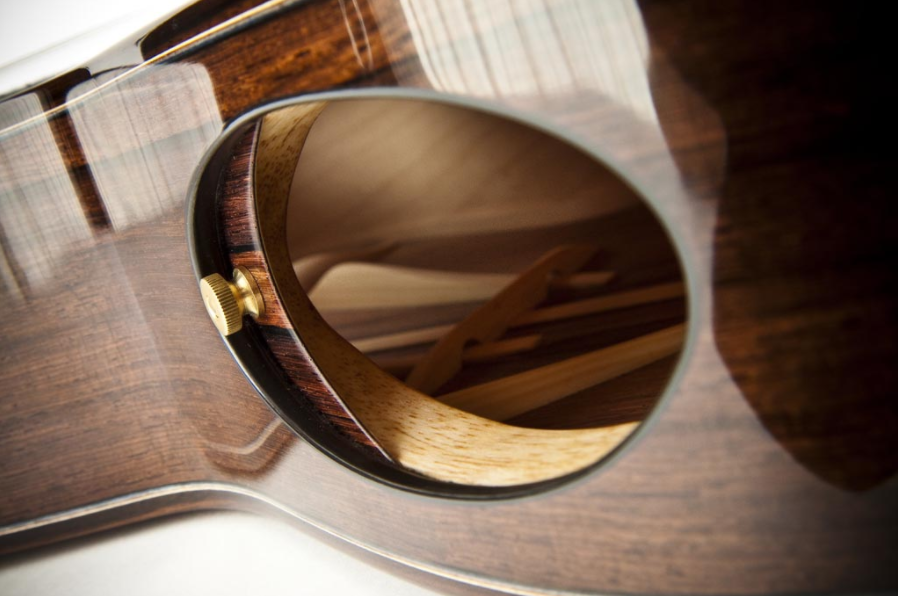Beautiful & Unusual Classical Guitars - Episode 2: Mangore 'White Tiger'
Every now again we see a guitar that captures our imagination and the White Tiger from Bellucci Guitars is definitely one of those! Read on to find out more about this stunning guitar creature.
Introduction
Bellucci Guitars headed by Renato Bellucci is known for making stunning guitars made from exotic woods and incorporating new design features like beveled cutaways, elevated fingerboards, soundports, & tailpiece bridges. Something else that they have also built a culture around is their use of unusual woods & combining them in unique ways.
In this article I will be focusing on just one of their designs as their company has too many wonderful classical guitars to cover in just one article!
The 'White Tiger' Classical Guitar
Full Specifications at a glance:
- Back and Sides - Black & White Ebony
- Top - Spruce
- Scale Length - 630mm
- Preamp - Artec Edge-Z
- Carbon fiber truss rod
- Indented/Beveled cutaway
- Armrest - Ebony
- Gold plated tuners
- 22 frets
- Radius fingerboard
- Bridge and Neck nuts - Buffalo horn
My Opinion
Sadly I haven't played this guitar and I probably never will as it was custom-made for a lucky gentleman from the USA but I can say that it looks stunning and is has some wonderful features that I'd certainly love to have on my custom-made guitar (when I get one).
Leave a comment and let me know what you think and make sure you check out my other articles on modern classical guitar design.
Beautiful & Unusual Classical Guitars - Episode 1: Projection Guitar (Florian Vorreiter)
Florian Vorreiter is at the cutting edge of classical guitar design. Read on to discover more about his ideas & philosophy behind guitar construction.
Introduction
Every now and again we see a picture or watch a video and something within catches our eye & our imagination. A couple of months ago I was browsing through some Pinterest boards and I happened to see a picture of a classical guitar with a soundport that had a sliding door as part of its design. I was so intrigued that I immediately occupied myself with further research and discovered that the guitar was made by a German luthier called Florian Vorreiter.
It seemed that it was destiny for Vorreiter to become a luthier extraordinaire as his father restored museum instruments for several decades, and through his father's craft he was exposed to instrument repair, design, & construction going on to make & revolutionise not only classical guitar design but also acoustic guitars, lutes, & Baglama.
A love for art & music showed from an early age with Florian being an avid violinist and in later years an artist with a passion and penchant for air brushes, spray cans, and the humble pencil. These two passions have combined to create what I believe to be some of the most visually stunning classical guitars of the 21st century.
The picture above says it all about these guitars but I should take some time to show you some of the unique features of a Vorreiter guitar.
The 'Floating Bridge'
Ergonomics
Headstock
Soundport Ideas
To find out more about modern classical guitar designs and features be sure to check out my other blog articles here. To find out more about Florian Vorreiter's fabulous guitars and the man himself take the time to visit his website:
Florian Vorreiter
Modern Classical Guitar Design Part 9: Reinforced Carbon Fiber Neck
If you've ever woken up one morning and found your guitar neck looking like a banana you're not alone. Should you buy a guitar with a carbon fiber-reinforced neck? Maybe...just maybe.
Introduction
Classical guitar necks usually aren't the most interesting conversation topic. Most of us are concerned with what wood it's made from, purfling, aesthetics, and of course the sound but from a luthiers point of view and as a player the neck is absolutely critical to the overall functionality and playability of the instrument.
Anyone that has played any kind of guitar that has neck issues such as warping will know the anguish of tuning and retuning constantly and never being able to get your guitar truly in-tune. On classical guitars this is caused by just one thing - a warped or damaged neck. Up until fairly recently classical guitars (especially those made by luthiers) avoided using any kind of truss rods either steel or carbon fibre or reinforcing of any kind in the neck, trusting in careful construction and material selection and superb care & handling by the owner to ensure a trouble-free neck after leaving the workshop. Unfortunately times have changed, people are traveling more and thus subjecting their instruments to wildly varying temperatures and humidity, materials that were available in the past are now either gone or restricted (CITES) or both causing luthiers to reevaluate how and what they use in their guitars to make them beautiful, mellifluous, and of course durable enough to handle the rigours of the modern world.
Enter Carbon Fibre Rods
Carbo Fibre isn't a new material at all - it's been around since 1879! Most of us really only came to know it commercially when it started to appear in expensive sports cars & bikes. Its commercial applications soon became widely known and it gradually started to make an appearance in many different industries including the music instrument industry and more specifically the guitar construction industry.
Carbon fibre also isn't new in the musical instrument realm. Many instruments or parts of instruments such as guitar picks, violins, violas & cellos, drum shells, and even entire guitars are made from carbon fibre. These items & instruments all take advantage of the high strength, light-weight, and complete evenness of the material to product products that are strong, predictable, and of course reliable.
As the title of the article suggests this is about carbon fibre rods being used in modern classical guitars to strengthen and stiffen the neck and also as a construction material for guitars that use 'lattice bracing'.
Is it really necessary?
Yes! From my perspective there is no downside to having reinforcement. I think of it like insurance - you never think it's useful until you actually need it then you extremely glad and grateful that you have it. There is a camp out there arguing or insisting that classical guitars only experience about 100 - 120lbs of pressure exertion upon the neck when stringed up and ready for action compared to steel string guitars that have about 170lbs minimum pressure. For me that isn't enough of a compelling argument.
Pros & Cons
Pros
- Superior strength
- Stability
- Durability
- Improved intonation
Cons
- Expensive
- Heavier
Which luthiers are using carbon fiber reinforced necks?
Here's a brief list of some famous classical luthiers using carbon fibre reinforcing:
Check out my other Modern Classical Guitar Design articles
Part 8: Fanned Frets
Part 7: Arched back
Part 6: Double Tops
Part 5: Lattice Bracing
Part 4: Armrest
Part 3: Soundport
Part 2: Indented Cutaway
Part 1: Elevated Fingerboard






